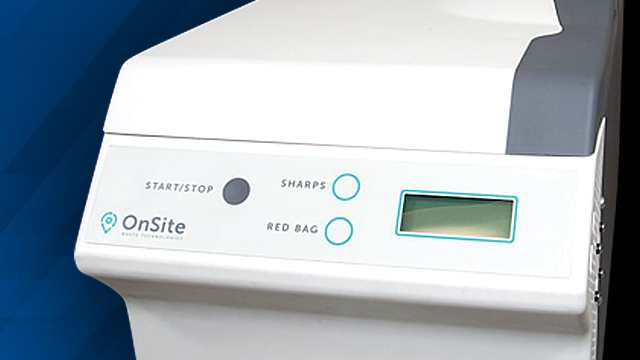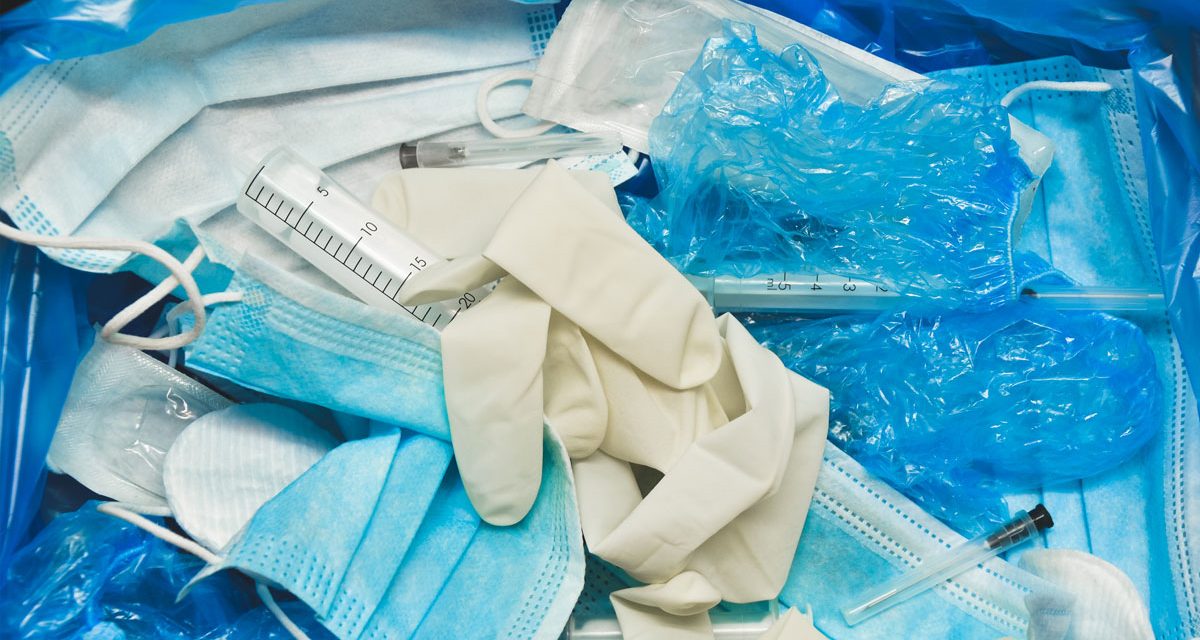Medical waste: a guide to best practices and solutions
According to the CDC, “an estimated 3.5 million tons of medical wastes are generated each year in the United States1.” Medical waste is unavoidable and an important industry cost to factor into the operations of any healthcare community. However, the lack of advancements in the medical waste industry have led to operational complexity and over-spending. Knowing how to properly dispose of healthcare medical waste can help keep your organization compliant as well as conserve time, money and resources.
In this blog, we’ll focus on three key healthcare medical waste FAQs:
What are the different types of medical waste?
The four major types of healthcare medical waste include pharmaceutical waste, red bag waste, sharps waste, and pathological waste. Learn more about a healthcare medical waste management solution.
How much does medical waste disposal cost?
Medical waste disposal and hauling is highly unpredictable. In a post COVID-19 world, the average cost of medical waste disposal will likely rise and adversely impact facility operations.
How can you optimize your medical waste program?
These practices are key when it comes to optimizing your waste disposal vendor management program: Recognizing the difference between allotment and transactional contracts, Analyze volume and waste segregation trends, and practice regular auditing. Learn more about a healthcare medical waste management solution.
Let’s get started.
What is Medical Waste Management?
Before optimizing your medical waste management program, a best practice is to know what medical waste consists of and how it is generated. The four major types of waste include pharmaceutical waste, red bag waste, sharps waste, and pathological waste:
- Pharmaceutical waste is any waste that includes I.V bags, tubing, and unused or expired regulated medications and controlled substances.
- Red bag waste relates to infectious packaging, infusion kits, gauze and any other material saturated in blood. It is also known as biohazardous waste.
- Sharps needle waste includes needles, blades, syringes, and other injection devices.
- Pathological waste includes tissue or body parts removed during surgery or research.
Why proper medical waste disposal is important
“Every year an estimated 16 billion injections are administered worldwide, but not all of the needles and syringes are properly disposed of afterwards2.”
Improper handling of clinical waste could lead to extreme outcomes, including:
- Release of infectious pathogens
- Burning
- Poisoning
- Contaminated environment
- Sickness from radioactive waste3
Takeaway tip: According to the CDC, “roughly 500,000 people in the United States are infected by blood-borne pathogens found in medical waste1”
Current challenges of medical waste disposal
According to the World Health Organization (WHO), “Lack of awareness about the health hazards related to health-care waste, inadequate training in proper waste management, absence of waste management and disposal systems, insufficient financial and human resources and the low priority given to the topic are the most common problems connected with health-care waste4.”
Thankfully, the United States has a variety of medical waste programs and resources to combat these medical waste disposal challenges, including OnSite, which we will discuss later on.
How Much Does Medical Waste Disposal Cost?
The highly unpredictable cost of medical waste hauling and disposal is a paint point for many healthcare communities. In a post COVID-19 world, the average cost of medical waste disposal will likely rise and adversely impact facility operations. A lack of pricing transparency from your waste disposal company may cause your healthcare community to incur hidden fuel costs and added service charges. Additionally, medical disposal contracts and invoices can be difficult to interpret.
How to Optimize Your Waste Management Program
With different types of waste storage, vendors, and disposal, waste management can be complicated. These practices are key when it comes to optimizing your waste disposal vendor management program:
Recognizing the difference between allotment and transactional contracts
- The Allotment Model includes inflexible pickup frequencies, overage charges, and inflexible contracts.
- The Transactional Model is the recommended waste management model and includes no waste pick up charges, non-optimal frequencies and over/under servicing.
Analyze volume and waste segregation trends
- Medical waste reduction from proper waste segregation and sterilization, can reduce volume and spend by as much as 80%.
Practice regular auditing
- By implementing quarterly auditing of your invoices and contracts, you can optimize your spend.

A New Solution for Medical Waste
OnSite Waste Technologies has developed a solution that is revolutionizing the medical waste disposal industry. Their TE-5000 device can help make your waste management program smarter, simpler and safer while bringing greater savings and compliance to your healthcare community. Direct Supply and OnSite’s partnership will support your community with transparent documentation and training to help you properly and cost effectively dispose of your medical waste, including:
- Document shredding
- Biohazardous medical waste
- Medical waste pickups
- Sterilization technology
- Medical waste mail-back kits
Need help with your healthcare safety medical waste management? Direct Supply and Onsite can help you optimize your program and reduce spend. Request a free ROI analysis for your corporation today!




